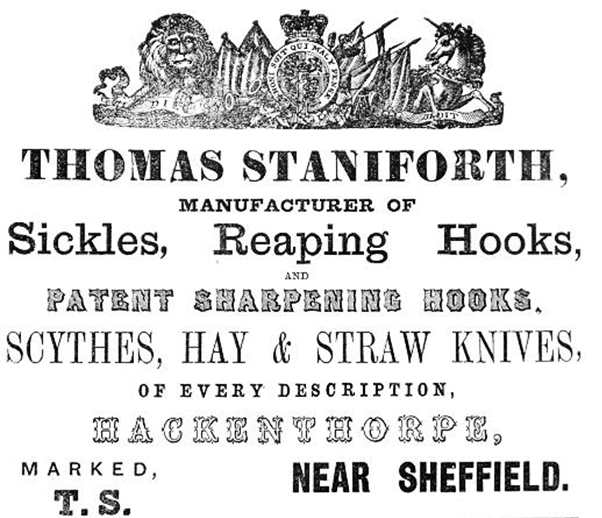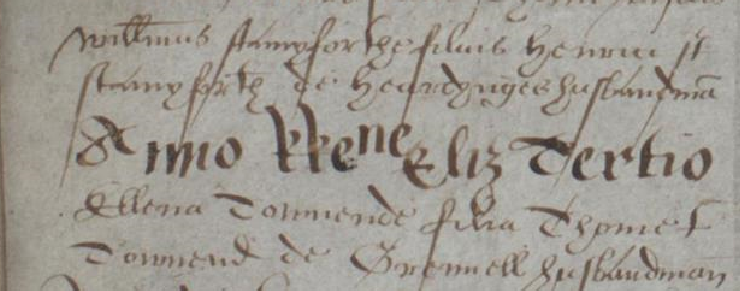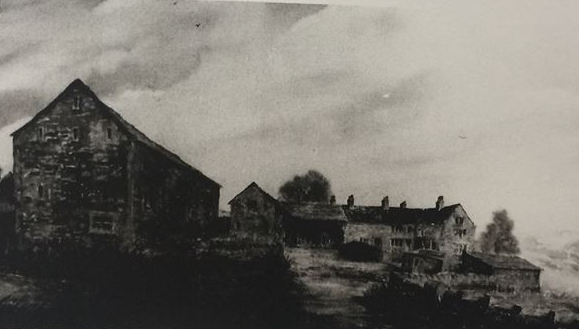
Thomas Staniforth & Co. Sickle works at Hackenthorpe.
 Baptism of William, son of Henry in 1560 (top line).
Baptism of William, son of Henry in 1560 (top line).
William’s early life is unclear, he was born two years after Elizabeth I took the throne, and we do know his father Henry died when William was only fifteen in 1575. On December 9th 1606 he married Elizabeth Thorpe, the daughter of Christopher Thorpe of Smithies, Woodseats. Christopher is described as a smelter. Elizabeth was twenty one years younger than William, so it has been suggested that she may have been his second wife, however there is no evidence for this.
It is quite evident that William of Woodsette (Woodseats) is the same William that moves to the neighbouring parish of Eckington, and is later known as William of Littfield. In July 1618, Edward Wilson of Charnock Hall sold William of ‘Littlefield’ ‘a parcel of land meadow or pasture inclosed called or known commonly by the name of Synfeild containing by estimation six acres to be it more or less lying and being in the fields or territories of Ridgway’. When referencing the 1795 Enclosure Map ‘near sinfield’ and ‘far sinfield’ can be found alongside the smithy at Littfield.
 Litfield Farm prior to renovations that took place in 2006
Litfield Farm prior to renovations that took place in 2006
William had a number of children, and when his youngest daughter Dorcas Staniforth was baptised in February 1618, he is still described as being ‘of Woodsette’ so it seems they likely relocated to Eckington in the spring of that same year.
When referencing the Cutlers records we can see three sons and apprentices to William of Littfield: William, Robert and John. He paid the Cutlers Company 6s, 8d in 1624 and in 1630 he passed away.
William’s second son John had completed his apprenticeship the same year his father died and so he took over the smithy at Littfield. His third son Robert took his freedom in 1636, and appears to have moved just to the south of Littfield in the hamlet of Ford. He is likely the same Robert Staniforth, Sicklesmith listed as churchwarden on the 1652 Eckington register.
There has been some confusion in various places over the years, as the small hamlet of Ford had two Robert Staniforths resident at this time, one the sickle smith and another a Tanner. Robert the Tanner actually appraised the inventory of William of Littfield upon his death in 1630 and surrenders some land which William had used to William’s son John the following year.
Robert the Tanner’s will is dated 1655 and he is described as being ‘Of Briggend’ (Bridge End). A Muster roll for the parish of Eckington dated 1638 includes the names of William’s three sons, and a second Robert is listed.